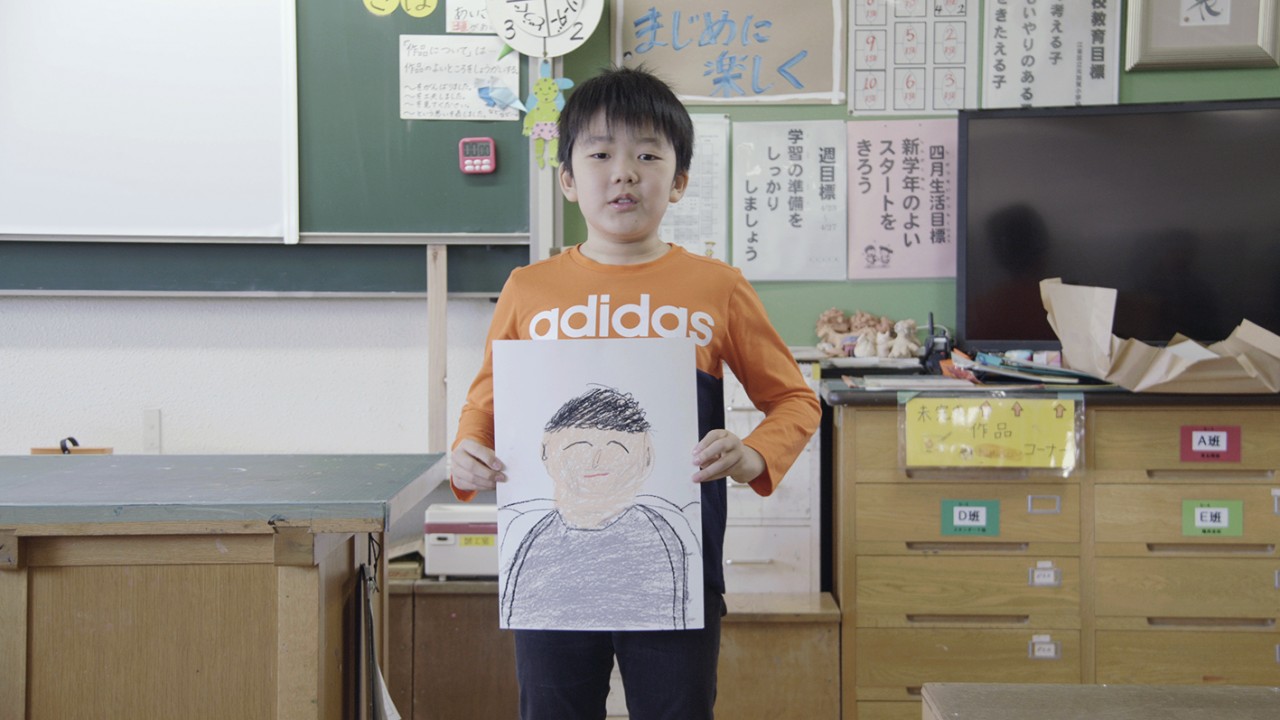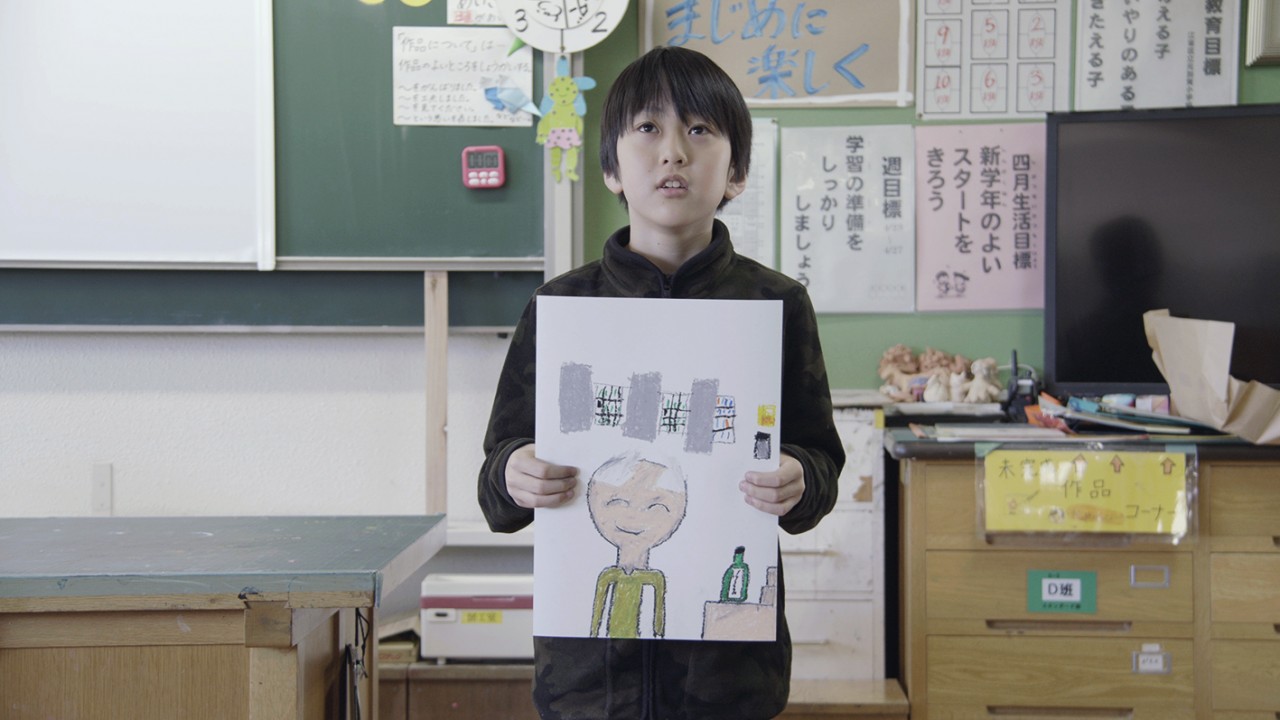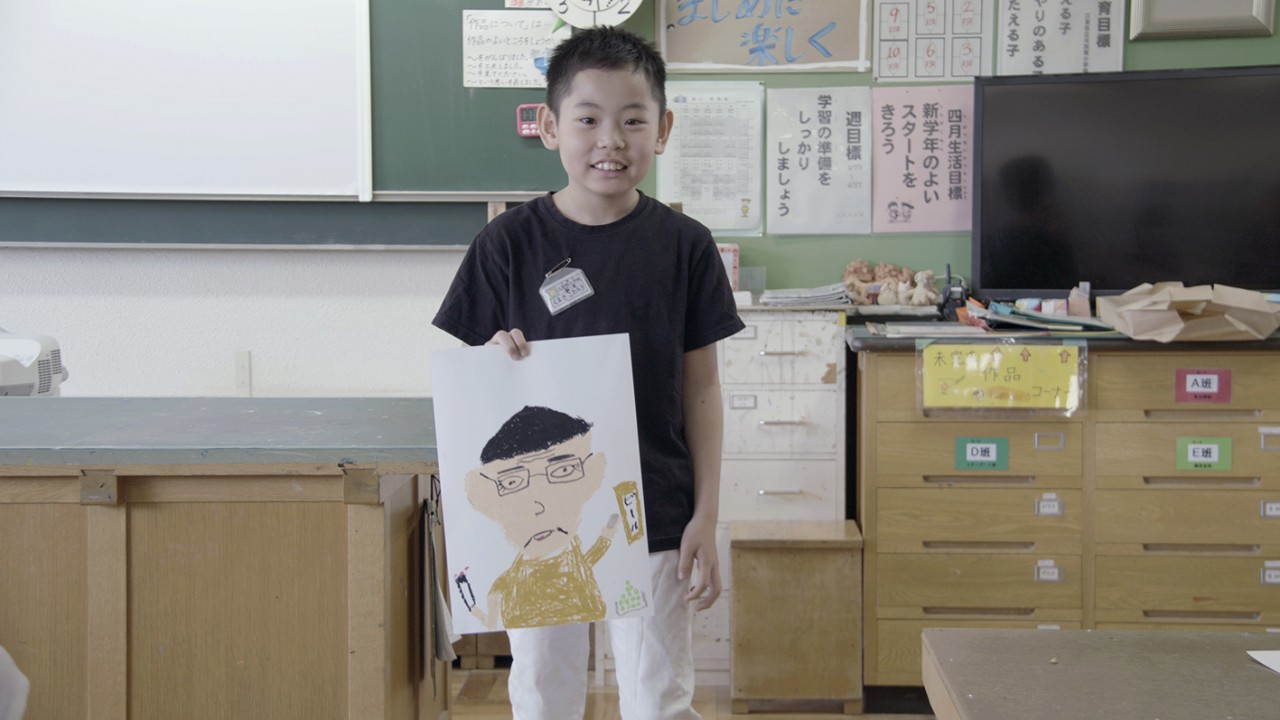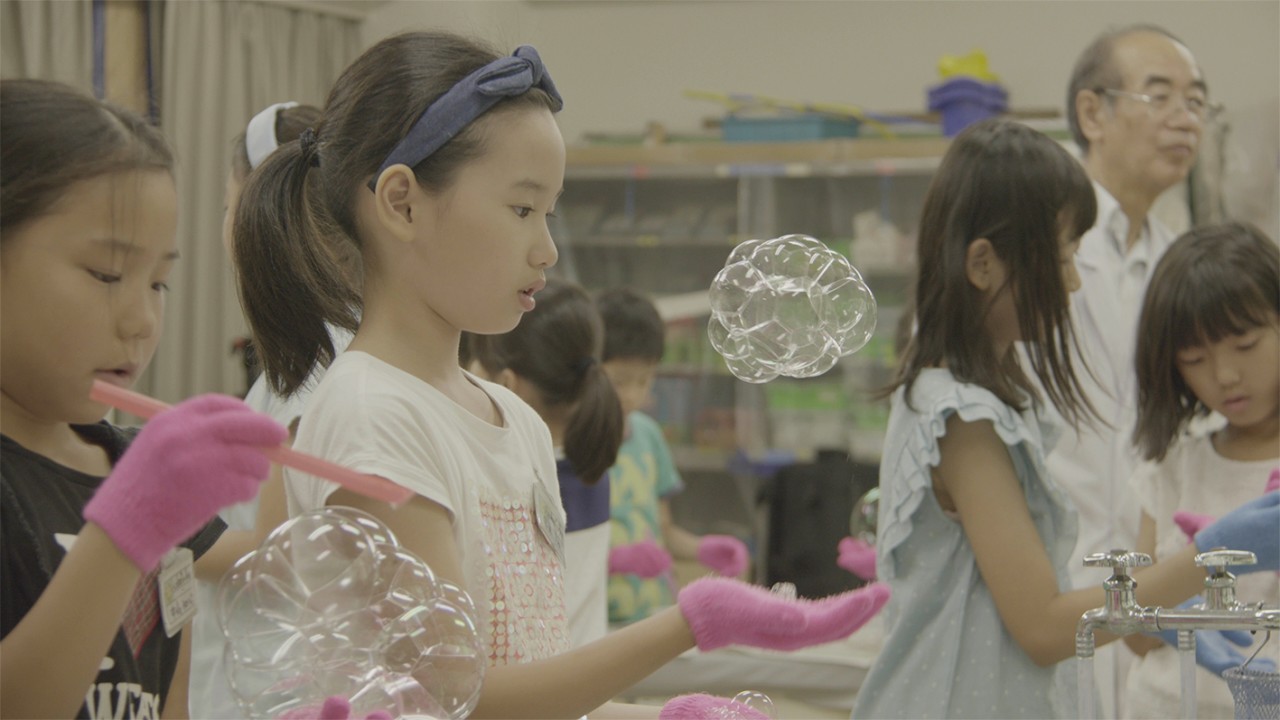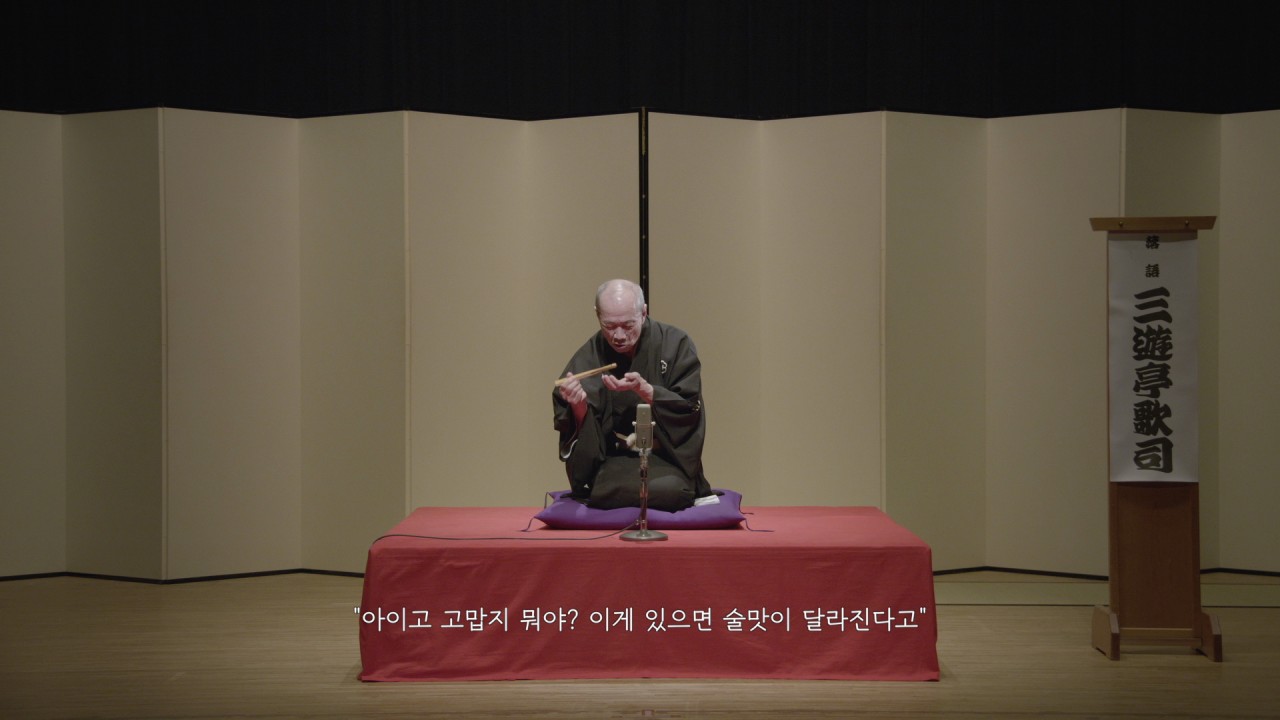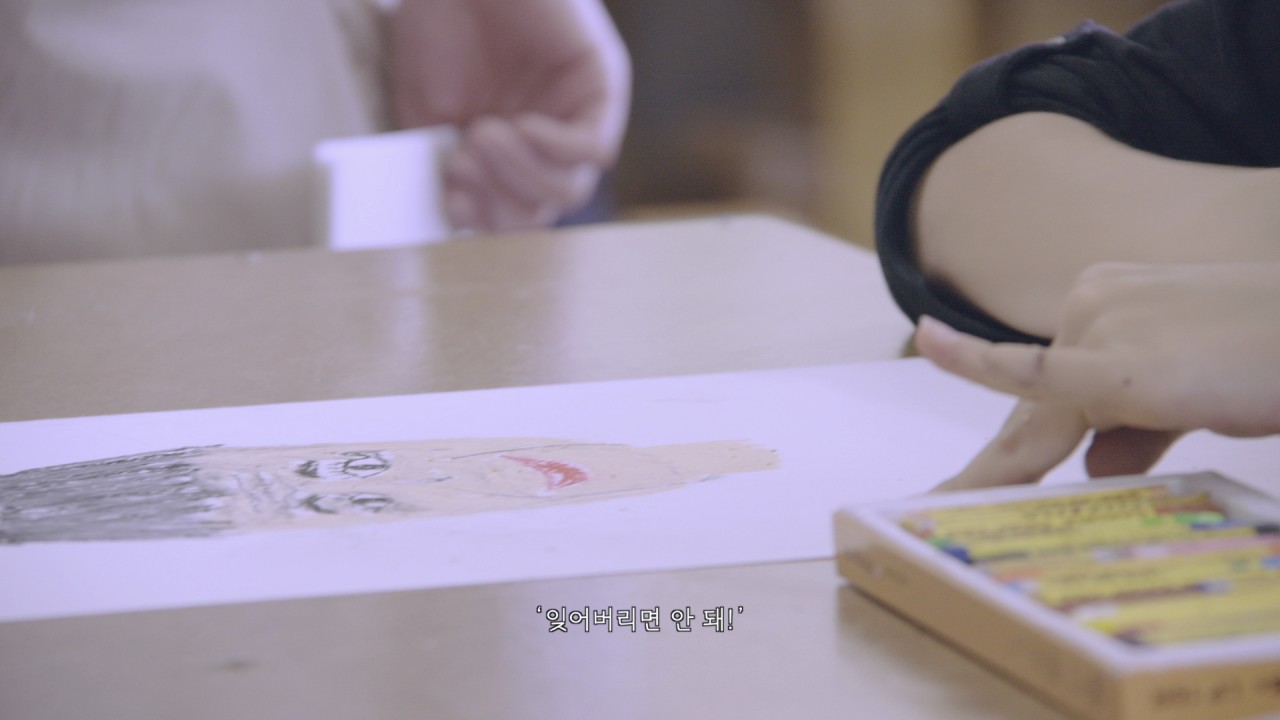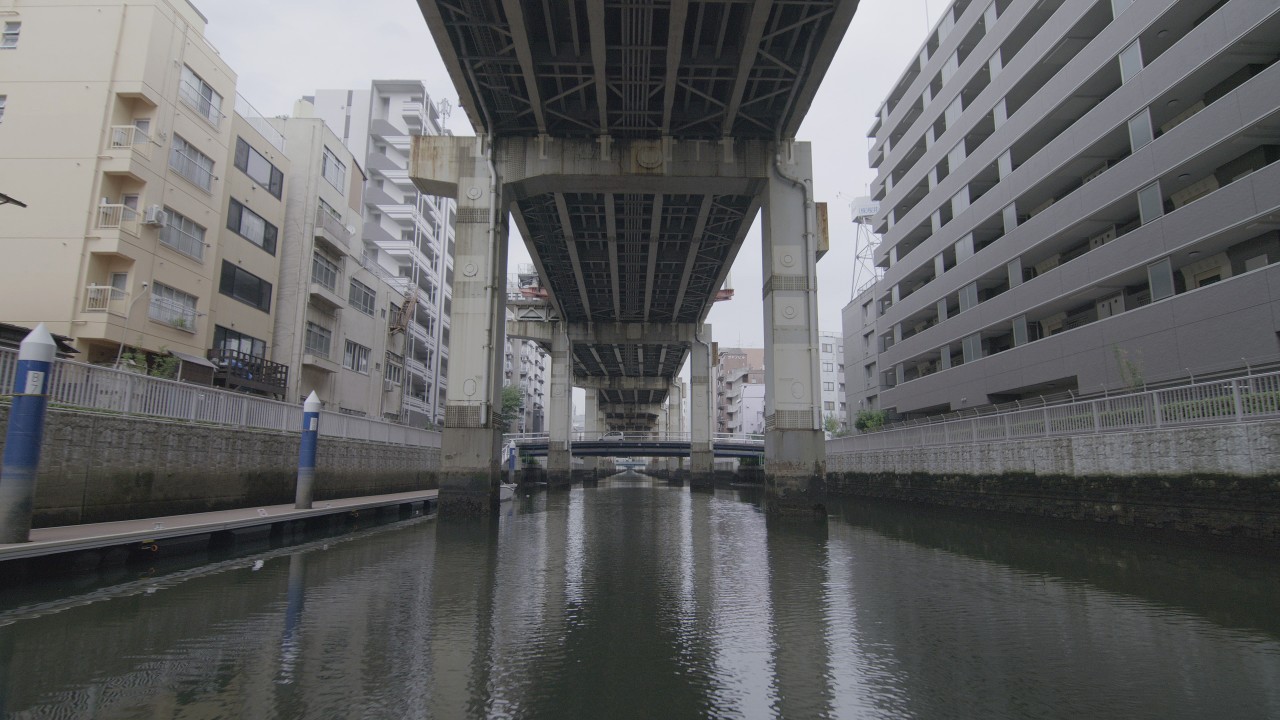Exhibitions
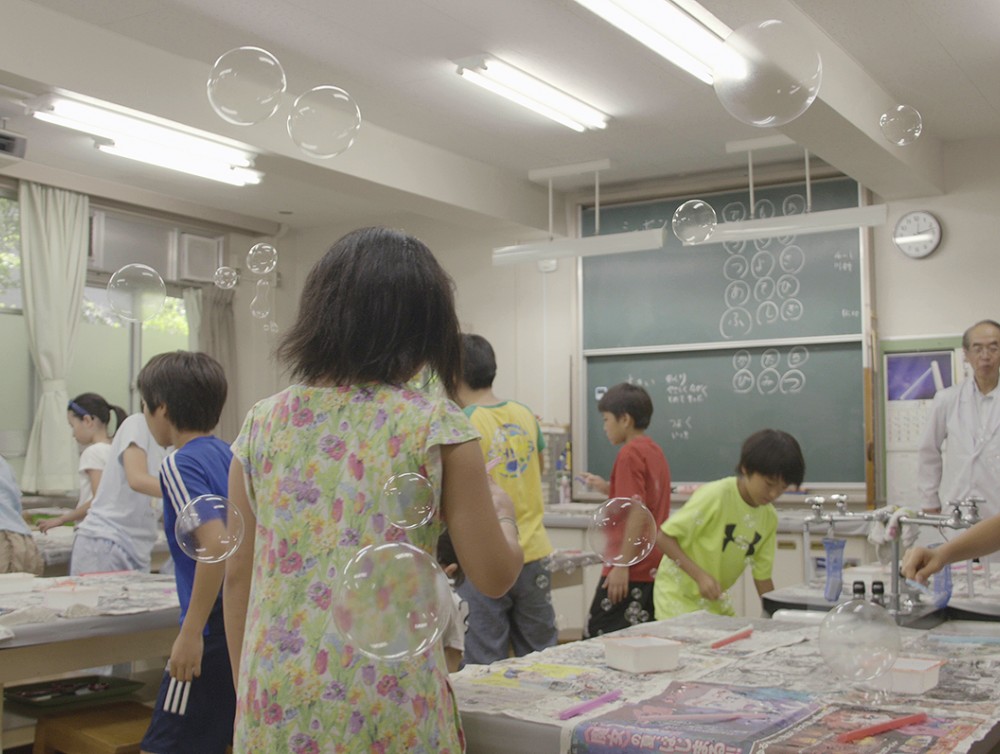
PERIGEE ARTIST #18 정연두
지금, 여기
2019.03.14. THU ~
2019.05.11. SAT
<지금, 여기 그리고 우리들의 돌림노래>
신승오(페리지갤러리 디렉터)
작가가 자신이 속해있지 않은 다른 지역의 역사나 사건을 소재로 다룬다는 것은 어렵다는 특정한 선입견을 갖게 만든다. 그것은 어떤 한 사람에게는 국가라는 특정 지역의 문화와 역사로 인해 오랜 시간 동안 축적된 지식과 관점이 이미 형성되어 있고, 이는 작가도 예외는 아니기 때문이다. 따라서 다른 나라의 것을 소재로 가져오는 것은 언제나 서로를 타자로서 바라볼 수밖에 없는 본질적인 한계를 가진다. 또한 특정 지역 이외에서 살고 있는 관객들과 작품이 어떤 방식으로 만날지 알 수 없기에 더욱 상황은 복잡해진다. 최근의 그는 다른 나라의 인물들을 소재로 어느 지점에서도 교차하지 않을 것 같은 여러 이야기를 하나의 작품에 담고 있는 작업들을 해오고 있다. 그러나 그가 보여주는 영상 속의 인물들은 중간지대에서 서로를 바라보는 것이 아니라 서로에게 영향을 주는 위치로 재수정되어 나타난다. 게다가 이러한 위치의 수정에는 작품을 바라보는 관객들도 포함되어 있다. <고전과 신작>도 이와 비슷한 구조를 가지고 있다. 그렇다면 그의 작업을 이해하기 위해서는 그 구조부터 살펴보는 것이 필요하다.
정연두가 최근에 선보이고 있는 작업에서 중요한 구조는 두 가지로 구분할 수 있다. 하나는 작가라는 외부인에 의해서 만들어진 망이다. 여기서의 망은 세밀하고 조밀한 구성으로 이루어져 있기도 하고, 크고 성긴 구조....
<Here, Now and Our Rounds>
Seung Oh Shin (Director of Perigee Gallery)
We tend to have a specific preconceived notion that it is difficult for an artist to address the histories and events of a region to which he or she does not belong. People come to possess their own established knowledge and perspectives that accumulate over a long period of time, influenced by a specific nation‘s culture and history, and artists are no exceptions. Accordingly, a work that adopts another country’s things as its subject matter has inherent limits: it cannot help but see everything as the other. Things can become more complicated as we do not know how viewers living in a particular area experience artworks. Recently, Yeondoo Jung has captured a variety of narratives that seem to have no connection in an artwork, addressing individuals living in different countries as his subject matter. The characters in his videos, however, appear to have an effect on one another instead of simply looking at each other in the middle zone. Audiences who view his videos are involved in the process of relocating their positions. Classic ....
신승오(페리지갤러리 디렉터)
작가가 자신이 속해있지 않은 다른 지역의 역사나 사건을 소재로 다룬다는 것은 어렵다는 특정한 선입견을 갖게 만든다. 그것은 어떤 한 사람에게는 국가라는 특정 지역의 문화와 역사로 인해 오랜 시간 동안 축적된 지식과 관점이 이미 형성되어 있고, 이는 작가도 예외는 아니기 때문이다. 따라서 다른 나라의 것을 소재로 가져오는 것은 언제나 서로를 타자로서 바라볼 수밖에 없는 본질적인 한계를 가진다. 또한 특정 지역 이외에서 살고 있는 관객들과 작품이 어떤 방식으로 만날지 알 수 없기에 더욱 상황은 복잡해진다. 최근의 그는 다른 나라의 인물들을 소재로 어느 지점에서도 교차하지 않을 것 같은 여러 이야기를 하나의 작품에 담고 있는 작업들을 해오고 있다. 그러나 그가 보여주는 영상 속의 인물들은 중간지대에서 서로를 바라보는 것이 아니라 서로에게 영향을 주는 위치로 재수정되어 나타난다. 게다가 이러한 위치의 수정에는 작품을 바라보는 관객들도 포함되어 있다. <고전과 신작>도 이와 비슷한 구조를 가지고 있다. 그렇다면 그의 작업을 이해하기 위해서는 그 구조부터 살펴보는 것이 필요하다.
정연두가 최근에 선보이고 있는 작업에서 중요한 구조는 두 가지로 구분할 수 있다. 하나는 작가라는 외부인에 의해서 만들어진 망이다. 여기서의 망은 세밀하고 조밀한 구성으로 이루어져 있기도 하고, 크고 성긴 구조로 되어 있기도 하다. 그렇다면 작가는 왜 이런 망을 사용하는가 알아보자. 이번 <고전과 신작>에서는 기본적으로 일본의 도쿄라는 지역이 설정되어 있다. 그리고 그의 영상에는 과거의 그 지역에서 2차 세계대전 기간 동안 전쟁에 대한 경험과 그로 인한 죽음에 대한 유년의 기억을 가지고 있는 노인, 노인과 같은 유년 시절을 보내고 있는 동일한 지역에 살고 있는 현재의 초등학교 학생들, 그리고 전통적인 일본의 이야기 예술 장르인 라쿠고(落語) 명인이 등장한다. 작업의 시작은 작가가 이들에게 어떤 요청을 혹은 질문을 하는 것이다. 그리고 그것에 답하여 그들이 우리에게 들려주는 것은 노인의 유년시절에 대한 회상, 초등학생들이 자신들의 할아버지를 그림으로 그리고 설명하는 이야기이다. 여기에 이런 작업을 작가와 공감하고 새롭게 공연 내용을 만든 라쿠고 명인의 공연이 더해진다. 이렇게 작가와 대화를 통해 등장 인물들이 꺼내어놓는 모든 이야기들은 작가가 특정하게 방향을 잡아서 만들어 가는 것과 그들이 자유롭게 말하는 내용에 따라 흘러가도록 하는 것이 서로 교차한다. 그리고 그는 이러한 개별의 이야기를 모두 중요하게 받아들이는데, 이것은 작가가 자신의 의도를 그들에게 일방적으로 전달하는 것이 아니라 그들이 최대한 자유롭게 생각하고 발화할 수 있도록 자율성을 주기 위함이다. 작가조차도 질문을 던질 수는 있지만 어떤 이야기나 상황이 벌어질지는 전혀 예상할 수 없는 현장의 즉흥성을 그대로 사용한다. 이런 방식으로 그는 영상 속 인물에게 능동성을 부여하고, 자연스럽게 이야기를 풀어놓는다. 다시 말하면 그의 작업은 작가에 의해 어떤 것을 새롭게 창조하여 선보이기 위한 무대가 아닌 등장하는 인물들에 의해서 자율적으로 꾸며지는 독립된 장이라고 할 수 있다. 단지 그는 이러한 자율성을 부추기는 구성을 만드는 역할에 집중하며, 그 대상이 되는 사람들에게 권위를 넘긴다. 따라서 이런 방식의 작업은 온전히 작가 개인의 작업이면서도 구성원 모두의 작업으로 자리매김할 수 있는 것이다. 이는 작품의 참여자들에 의해서 이미 작가는 ‘듣는 자’라는 위치를 부여받은 작가의 상호 관계성에서 기인한다. 이렇게 정연두는 서로의 신뢰성에 바탕을 두고 이야기를 최대한 사소한 것까지도 귀 기울여 듣고 바라보는 태도를 가지며, 그가 만들어낸 망을 통해 무엇인가 단단하게 연결되어 있는 것들을 드러내는 것이 아니라 서로 멀리 떨어져 있는 것들을 서서히 가깝게 이동시키고 있다.
두 번째는 그들의 이야기를 전달하는 언어와 이를 시각적으로 보여주는 자막이라는 텍스트이다. 모국어가 아닌 언어를 사용하게 되면 기본 정보 이외의 언어적 미묘함을 이해하기 힘든 단절이 존재할 수밖에 없다. 따라서 작가는 최대한 정확한 번역을 자막이라는 텍스트로 사용하는데, 이럴 경우 각각의 언어가 가지고 있는 분위기를 즉각적으로 온전히 전달하기까지 또 다른 문제가 생긴다. 왜냐하면 관객들이 다른 언어로 진행되는 작업을 보게 되면 그들이 하는 언어의 소리 그리고 인물들의 표정과 행동보다는 자막에 집중하게 되기 때문이다. 예를 들면 <고전과 신작>에서 라쿠고의 형식인 언어유희를 텍스트로만 읽어낸다면, 라쿠고의 웃음과 진지함 사이에서 드러나는 특유의 해학적인 분위기로 전달하고자 하는 이야기에 공감하기 쉽지 않을 것이다. 이렇게 다른 언어를 번역하는 것은 영상에 등장하는 인물들이 들려주는 것들의 의미를 정확하게 전달하기 위해 노력하는 작가에 있어서 중요한 요소이다. 이와 같은 언어의 번역은 서로 다른 언어를 사용하는 사람들의 관계가 전달자인지 수용자인지에 따라 계속해서 수정될 수밖에 없는 환경을 제공한다. 따라서 언어라는 도구 하나만을 통한 의미의 전달은 어려운 한계점을 가지고 있다. 그렇기에 그가 고민하고 있는 번역은 좁은 의미에서 다른 언어를 나에게 익숙한 언어로 옮기는 것이 아니라, 언어 이외에 서로가 가지고 있는 의미를 공감하기 위한 번역이라는 개념이다. 이는 언어와 텍스트로 순환하는 지시체를 따라 서로를 놓치지 않고 중간에서 만날 수 있는 가능성을 열어주는 배열 체계에 대한 관심이다. 이를 위해 작가는 완벽한 텍스트적 번역 이외에 어떤 우회로를 찾아내었다. 그가 선택한 우회로는 언어의 기본적인 번역을 바탕으로 그들의 미묘한 움직임, 언어가 가진 억양과 운율, 얼굴의 표정, 전통적인 분위기, 그리고 장면들의 리듬과 흐름 등 다양한 요소들을 그대로 담아냄으로써 의미를 전달하는 것이다. 이런 방식은 지식적인 내용을 만들어 내는 것과 동시에 직관적으로 이해할 수 있는 틈을 만들어 내어 관객들을 어디론가 이상한 곳으로 표류하게 만들거나 정상적인 궤도에서 미끄러짐이 발생하도록 만든다. 그렇기에 그가 만들어내는 이와 같은 구조 안에서 관객인 우리는 장소와 시간과 주체들이 서로 다르게 연결된 망을 그 내용의 서사를 파악하는 도구로 사용하는 것 보다는 이를 직관적으로 이해하는 것이 중요하다. 그렇지 않다면 관객은 등장인물이 이야기하는 내용의 언어와 맥락 사이의 관계를 파악하는 단계에서 그냥 각자의 자리에 그대로 머물러 있게 된다. 물론 그의 작업에는 기본적으로 작품을 관통하는 서사가 존재한다. 그러나 작가가 선택한 서로 다른 시간대의 이야기는 우리를 하나의 길로 인도하는 것이 아니라 여러 개의 우회로를 제시하고 있는 것이다. 이와 같이 작가는 공통적으로 연결되는 기본 줄거리를 우리에게 선명하게 보여주면서도 사실상 분절되어 있는 관계를 여러 방향에서 연결시킨다. 따라서 이는 번역된 텍스트만을 읽어 내서 정보를 획득하는 것과는 또 다른 차원을 제공한다. 이렇게 그의 작업에서 번역은 다른 언어를 통해 무엇인가를 이야기하고 그것을 듣고 눈으로 읽어 내는 이성적 이해와 동시에 진정으로 공감을 바탕으로 이해하고 느끼는 것이다. 다시 정리하자면 이런 정연두의 작업을 읽어 내기 위해서는 여러 가지 난관에 봉착하더라도 상대방이 우리에게 이야기하는 것에 눈을 서로 맞추고 듣고, 보고, 공감하기 위한 여러 가지 우회로들을 찾는 노력을 통해 이를 이해하려는 적극적으로 열린 태도가 필요한 것이다.
마지막으로는 <고전과 신작>에서 인물들이 들려주는 장면 이외의 것들을 살펴보자. 그의 영상에서 대사 없는 장면들은 그의 작업을 더욱 밀도 있게 이어주는 역할을 한다. <고전과 신작>은 도쿄라는 공간을 조망하면서 아이들의 북소리로 시작된다. 이것은 할아버지의 유년 기억에서 죽음에 대한 공포와 경험에 기인한 두려운 소리이지만, 작품 후반부에 다시 들리는 똑같은 북소리는 세상이 새롭게 시작됨을 알리는 소리로 다르게 읽혀진다. 아이들이 과학시간에 비눗방울을 즐겁게 날리는 장면은 할아버지의 기억과 대조되는 것으로도 보이지만, 결국 어떤 형태로 나올지 모르고 이내 사라져 버리는 자유로움과 허망함을 통해 우리가 행동하는 그 시점에서 언제나 새롭게 무엇인가가 만들어진다는 지금 여기의 중요성을 보여주고 있다. 또한 아이들이 붓글씨 수업시간에 ‘열다’의 의미인 개(開)를 쓰는 장면은 라쿠고 명인의 공연과 연결되어 현재와 과거를 이어주는 것은 결국 크게 상대방이 우리에게 표현하는 것을 듣기 위해 모든 것을 활짝 열고 서로를 바라볼 때 가능하다는 것을 은연중에 드러내고 있다. 그리고 어디론가 물길을 따라 진행되어 나가는 마지막 장면은 이것이 끝이 아니라 지속되어 나간다는 것을 암시한다. 이렇듯이 연속적으로 교차되어 나가는 그의 작업은 단순히 말을 통한 언어적 전달과 몸짓, 표정, 태도, 조건, 장소, 오브제 등 다양한 비언어적인 방식을 동시에 사용하는 것이다. 그가 집중하는 것은 생소한, 모르고 있었던, 꼭 알아야 하는 것이 아니라 어느 장소, 시간 속에서 만나게 되는 지금 자신이 바라보는 바로 그 지점에서부터 이야기를 퍼져나가게 만드는 것이다. 이는 어디에도 속할 수 없지만, 모든 곳에 들어맞는 이야기로 전환되며, 그가 등장시키는 인물들이 하는 이야기에 빠져들게 만든다. 그리고 더 이상 여기에는 작품 제목인 <고전과 신작>과 같은 그 어떤 구분이 작용하지 않는다. 단지 작가가 듣기 시작하면서 우리도 동시에 등장인물들과 대화와 교감을 서로 나누는 것이다. 따라서 관객들은 모든 감각을 동원해서 그들이 들려주는 것을 듣고자 노력해야 한다. 이런 방식은 단순하지만, 세계에 대한 우리의 재현이 무엇인지에 대한 인식론적 관점과 세계가 실제로는 어떠한지에 대한 존재론적 관점, 이 두 가지 중 어느 한편으로 기울어지거나 차이만을 확인하는 것이 아니라 순차적으로 노래를 이어 부르며 풍성한 화음을 만드는 돌림노래와 같이 동시다발적으로 나타나게 만드는 것이다.
지금까지 살펴본 그의 작업에서 필자가 주목하는 것은 이러한 작품에서 ‘작가는 어디에 위치하고 있는가’이다. 정연두는 무엇을 읽어내는 주체의 역할에서 벗어나 다른 사람의 이야기를 꼼꼼히 들어주면서 등장인물과 수평적 관계에 위치하려 균형을 잡고 있다. 이는 작가가 틀을 설계하고 그 의도에 따라 세심하게 연출해 드러나는 것이지만, 여기서의 의도는 어떤 상황을 단지 구성하고 언어적인 요소와 비언어적인 요소를 동시에 담아내어 고스란히 전달하기 위한 가벼운 도구일 뿐이다. 그렇기에 이들 각각의 이야기들은 우리에게 계속해서 무엇인가 수정하고 성장해 나갈 것을 촉구하는 것처럼 보인다. 그리고 이는 단순히 작가에게만 발견되어 벌어지는 사건이 아니라, 그가 다가가는 대상과 작품을 보는 관객 모두가 연결되면서 같이 시작되는 것이다. 결국 정연두에게 있어서 작가인 자신을 비롯해 각각의 공간에 벌어지는 역사와 사건, 인물들, 언어라는 것은 단지 수많은 동등한 위치에서의 차이일 뿐이다. 하지만 차이가 가진 가능성을 처음부터 쉽게 인지할 수 있는 방법은 없다. 그렇기에 작가는 작업을 통해 그 차이의 간극을 단순히 채워나가는 것이 아니라 인물들에게서 발견되는 능동적인 실체들 사이에 차이들을 따라 자연스럽게 이동하는 결과를 의도할 뿐이다. 따라서 그는 이야기를 만들어 내는 창작자라기보다는 이야기를 듣기 위한 도구를 만드는 ‘듣는 자’이다.
Seung Oh Shin (Director of Perigee Gallery)
We tend to have a specific preconceived notion that it is difficult for an artist to address the histories and events of a region to which he or she does not belong. People come to possess their own established knowledge and perspectives that accumulate over a long period of time, influenced by a specific nation‘s culture and history, and artists are no exceptions. Accordingly, a work that adopts another country’s things as its subject matter has inherent limits: it cannot help but see everything as the other. Things can become more complicated as we do not know how viewers living in a particular area experience artworks. Recently, Yeondoo Jung has captured a variety of narratives that seem to have no connection in an artwork, addressing individuals living in different countries as his subject matter. The characters in his videos, however, appear to have an effect on one another instead of simply looking at each other in the middle zone. Audiences who view his videos are involved in the process of relocating their positions. Classic and New has a similar structure to this. It is required to examine this structure in order to better understand his works.
The significant structures of Jung’s recent works can be classified into two types. The first is use of a net that he himself made as an outsider. The net mentioned here can be either minute and dense or large and sparse. Let us analyze why the artist adopts such a tool. The stage of Classic and New, the work on display at this exhibition, is set in Tokyo, Japan. This video features an old man who recalls childhood memories of his region during the Second World War and several deaths, primary school children of present days who live in the same region as the old man, and a master of rakugo, a traditional Japanese art genre of narratives. The video starts with a request or question the artist asks them. Responding to this, the old man reflects back on his childhood while the children draw their grandfathers and talk about them. Added to this is a performance by the rakugo master who sympathizes with the artist and renews the performance. Each narrative the characters exchange with the artist goes forward either in the direction he has set or in the direction they want to discuss. The artist considers each narrative of great significance. He aims to give the characters autonomy so that they can think and narrate without any restrictions and without unilaterally conveying his intentions. Although the artist might ask some questions, he actively adopts spontaneity in that he never anticipates which narrative or situation will occur. In this way, he lends activity to the characters in his videos and naturally conveys his own stories. That is, his work is not a stage for something to be created anew and put on display; it is an independent forum his characters design autonomically. He simply concentrates on bringing about some structure to stimulate such autonomy, handing over his authority to his characters. This type of work can thus be regarded as both his individual and each member’s work. This results from his correlationship in which he is empowered to be “the listener” by the participants in his works. As such, Jung attentively listens to and looks at even the most trifling factors found in other people’s stories based on mutual confidence. He does not disclose something that is solidly linked to something else through his nets, instead gradually moving far away things closer.
The second type is the language used to convey their stories and the subtitles used to visually display them. The use of one’s non-native language may inevitably bring about some severances and misconceptions due to delicate shades of meaning found in each language. Jung employs accurately translated subtitles in his video, but another problem arises in immediately conveying some nuances peculiar to each language. This is because when it comes to a work couched in a different language, viewers concentrate on the subtitles rather than the words, expressions, and actions of the main characters. If a play on words, a typical form of rakugo in Classic and New is merely regarded as some text, it is not easy to sympathize with the story couched in the humorous atmosphere that arises from somewhere between rakugo’s laughter and seriousness. For the artist who tries to convey the meaning of what the characters in his video say with accuracy, translating their stories into a different language in this way is a significant factor. This translation brings about the environment that keeps changing inevitably depending on the relations of those who use different languages: whether they are messengers or accepters. There is a limit to conveying the meaning only with the means of languages. The concept of translation he considers is not to translate some meaning into other languages familiar to him but to sympathize with the meaning each one has. This has derived from his interest in the array system which enables referents to encounter in the middle of language and text. To do this, the artist has looked for a detour aside from any perfect translation of text. The detour he has chosen is to convey meaning by involving a variety of factors such as the characters’ subtle actions, their language’s intonation and cadence, facial expressions, and each scene’s rhythm and flow, based on the elemental translation of text. This way has viewers drift about some strange place or run off the normal track by engendering some knowledgeable contents and intuitively comprehensible chasms. Therefore, it is more important for us to figure out the networks of place, time, and subject with our intuition and tap into them as the means for grasping the narratives. If not, viewers are at the stage where they apprehend the relation between the language and the context of the stories the characters convey. Of course, his work presents narratives penetrating his pieces. The narratives of different time zones he has selected do not lead us one way but present a few detours. He links separate relations in many directions while vividly displaying commonly connected elemental plots. Accordingly, this provides another dimension different from the one in which one acquires snippets of information by reading translated text. In his work, translation is either to apprehend something with our reason by speaking about it, listening to it, and reading it with our eyes or to feel it with our sympathy. Rephrased, we need an aggressively open ourselves to understand Jung’s work through our efforts to look for various ways of listening to, seeing, and having the sympathy with what others say even though we might encounter difficulties.
Lastly, aside from the scenes conveyed by figures in Classic and New, there are other things that can be examined. The non-verbal scenes in this video assume a role of densely uniting its images. Starting with the sounds of drums played by children, the work brings light to the space of Tokyo. It is a sound that arises from fear or the experiences pertaining to the old man’s childhood memories, but in the latter half of this work the sounds of drums are like heralding the new start of the world. The scene of children blowing bubbles with delight in their science class seems to be in contrast with the old man’s memories. This is intended to demonstrate the significance of the here and now: something new will always be brought about in this point in time in which we act with unrestrictedness and futility. The scene in which the children write the character “開” meaning “opening” relates the past to the present in association with the rakugo master’s performance. After all, it implies that it is possible for us to hear what others have said only when we open everything and take a look at each other. The last scene in which something follows along a waterway hints that this is not the end: it is just a continuation of something. In this way, his work employs both linguistic conveyance and non-linguistic manners such as gestures, expressions, demeanors, conditions, places, and objects. What he focuses on are not the unfamiliar, unknown things we must come to know but things that spread his stories from the position where he encounters and sees things. It does not belong anywhere but converts to a story that fits in everywhere, causing us to fall into the stories his characters convey. No more distinction between Classic and New like the title of the work is adopted. As the artist begins to hear, we also begin a discussion and sympathize with his characters. Accordingly, the audience has to make efforts to hear what they say using all of their senses. This way is simple but is not to confirm any difference between the epistemic point of view on what our representation of the world is and the ontological point of view on what the world is actually like.
The core aspect that I found from his work is where the artist is positioned in his works. He tries to stay in a horizontal relationship with his characters as he listens carefully to their stories, departing from the position of a subject who interprets and reads something. His position is revealed depending on how he intends to design and direct a frame, but the intention here is nothing but a device to construct some situation and hold both linguistic and non-linguistic factors. As a result, each individual’s narratives seem to urge us to keep correcting something and growing. This is not the event that takes place, discovered only by the artist, but the one in which both the objects he approaches and the viewers are all linked together. To Jung, after all, historical events, languages, and figures including the artist himself disclose any differences at equal positions. All the same, however, there is no way to perceive such a difference easily. He merely intends to bring about the result of naturally moving toward such differences among active entities rather than filling such gaps through his work. He is just a listener who makes a tool to hear stories rather than a creator who fabricates them.



